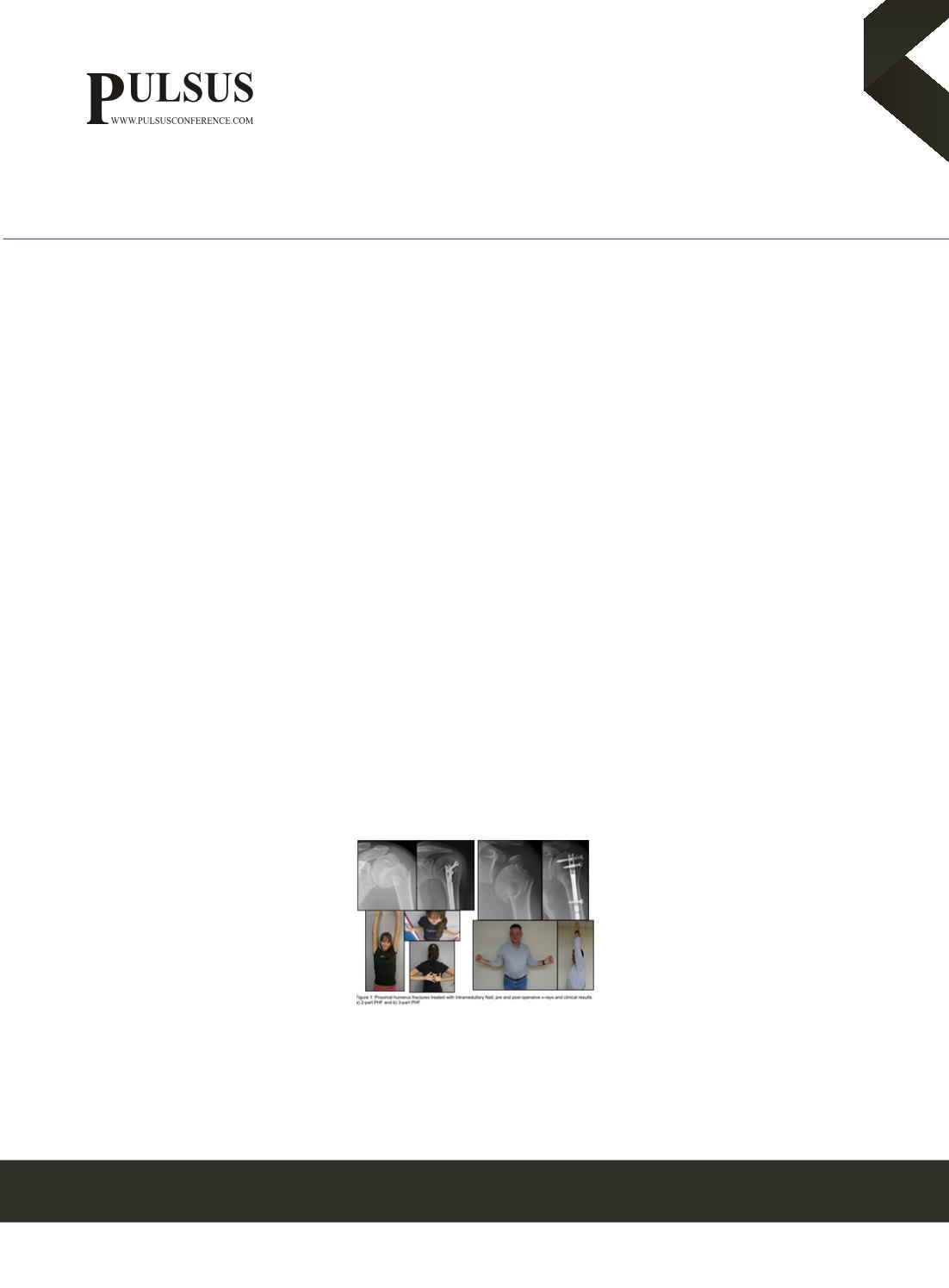

Page 20
Arthroplasty 2019
June 24-25, 2019
Volume 14
Journal of Orthopaedics Trauma Surgery and Related Research
Arthroplasty
June 24-25, 2019 | Rome, Italy
12
th
International Conference on
Straight proximal humeral nail through the medial “hinge entry point” for treatment of
displaced proximal humerus fractures
Gabriel Cárdenas
University of Côte d'Azur, France
Statement of the Problem:
Surgical management of proximal humerus fractures (PHF) remains a challenging scenario
for even the most experienced surgeons. Recently, the Intramedullary Nail (IMN) has become more widely used as it
presents both biological (percutaneous approach) and mechanical advantages compared to other methods of fracture
fixation. The purpose of this study was to analyse the clinical and Imagenological outcomes of a straight third generation
IMN for PHF through the medialized entry point (respecting the Supraspinatus tendon insertion) at minimum 6 months
follow-up.
Methodology & Theoretical Orientation:
We retrospectively analysed a series of 37 patients from two Hospitals
operated between November 2016 and March 2018. The surgery was performed under the same technical principles.
The clinical scores (VAS, SSV, ROM and Constant Score), radiographic (rate of consolidation, coronal orientation and
osteonecrosis of the humeral head, screw penetration and migration of the greater tuberosity) and echographic parameters
(proximal nail prominence, medio-lateral entry point and status of the SSP tendon) were also analysed. Findings: 35
patients were available for study, a mean follow-up of 11 months [6-32]. The average age was 64,5 + 13 years and the
84,3% were males. The Neer classification was 62.5% 2-part fractures and 37.5% 3-part fractures. The clinical results
were satisfactory (VAS: 1,6 pts; SSV: 75%, CS 67 pts and adjusted CS 90%). We found 21,8% of minor complications (7
cases), but only one required surgery (arthroscopic biceps Tenodesis). We did not have any case with a Major complication
(non-union, osteonecrosis of the humeral head, intra articular screw penetration or greater tuberosity migration). Only1
patient presented a total SSP tear (90 years old) and 3 articular partial tear, all of them with good clinical results. No
reoperation was required secondary to rotator cuff tear pathology.
Conclusion & Significance:
In this series of patients from 2 hospitals, the IMN for displaced PHF showed good clinical,
radiological and echographic results, with no major complications in reoperation, and preserving the integrity of the SSP
tendon.
Biography
Gabriel Cárdenas has expertise in the evaluation and management of shoulder pathology. He has served as the head of shoulder
arthroscopy, trauma and reconstruction unit of the Chilean Institute of work safety (Instituto de Seguridad del Trabajo, IST). He currently
is completing a year-long fellowship at the University Institute of Locomotion and Sport, Pasteur 2 Hospital in Nice, France, under the
guidance of Professor Pascal Boileau.
dr.gcardenaso@gmail.comGabriel Cárdenas, J.Orthop.Trauma Surg.Relat.Res. | Volume 14
ISSN:2449-9145
















